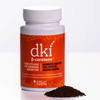The addition of color enhancers to feed is an important aspect of nutrition in aquaculture and ornamental fish. It should be noted that the color of the scales and the skin is one of the most important quality criteria that dictate the market value of the fish, in addition to its impact on the physiological, behavioral and welfare conditions of the animals raised in captivity.
In general, the pigments involved in the coloration of fish are melanin, guanine and carotenoids.
Melanin and guanine can be produced by most fish and therefore do not need to be supplemented in the diet, but fish are unable to synthesize carotenoids de novo and thus these pigments have to be obtained from from diet. In this scenario, Dunaliella and Haematococcus microalgae represent natural sources of two main carotenoids, β-carotene and astaxanthin, respectively. These two pigments are responsible for the pink/orange/reddish skin pigmentation in a wide range of fish species, both in aquaculture and in the aquarium, as has already been shown following dietary supplementation in commercially important fish. Furthermore, the high efficacy of Dunaliella and/or Haematococcus in natural color enhancement is based on a series of scientific studies conducted on the most prominent aquarium fish species.







